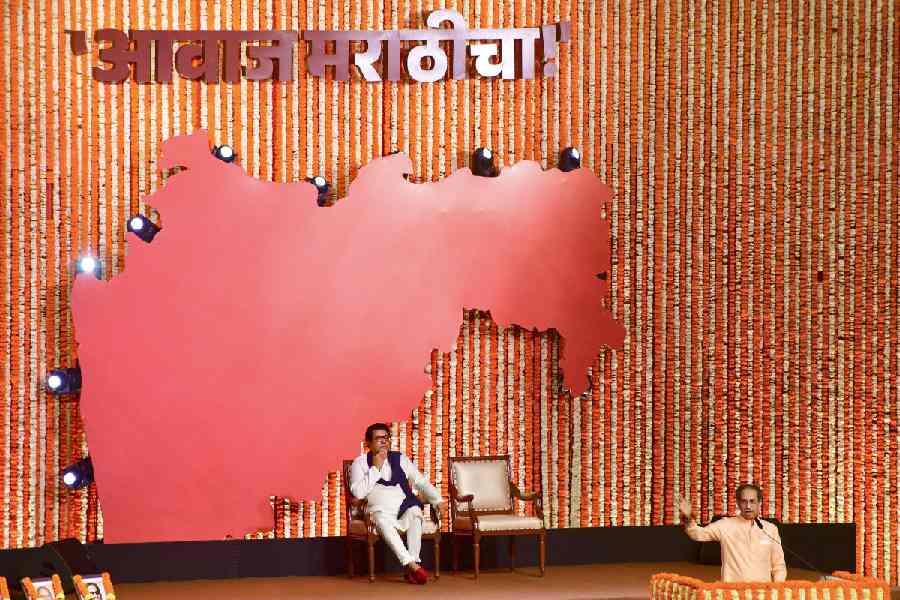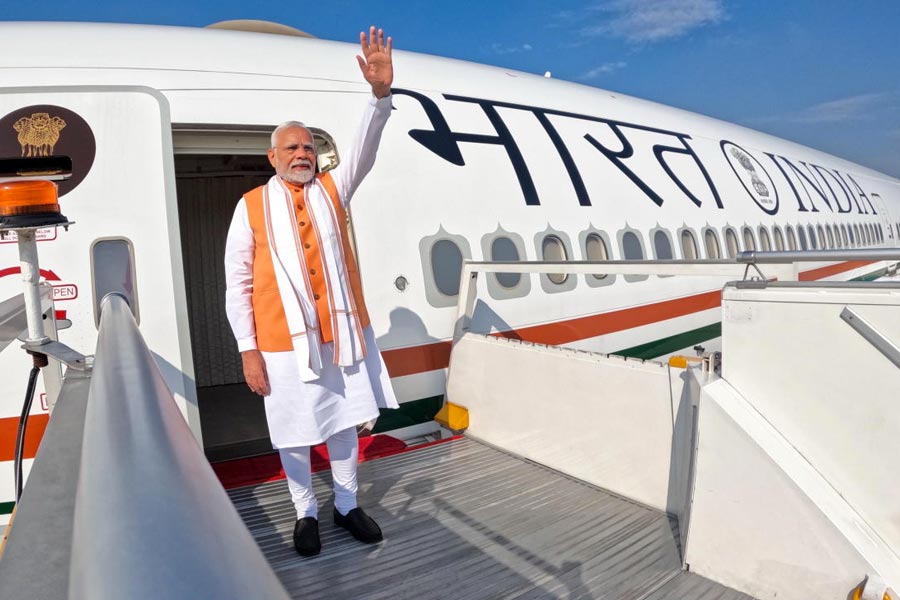 |
| A man offers prayers to ‘fossil god’ in Mandro. (Gautam Sarkar) |
Mandro (Sahebganj), Feb. 23: The Paharia tribals of Rajmahal hills have vowed to protect the endangered fossils of the region.
The rare fossils, between 70 million and 150 million years old, and once found in abundance in the area, are rapidly disappearing. Lack of initiative on the part of the authorities and rampant stone mining in the region are turning the treasures hidden in the sedimentary rock strata of the hill range into dust.
Renowned paleontologist Prof Birbal Sahni first discovered the presence of fossils here way back in 1921 and then spent years studying them.
The Rajmahal Hills were described by geologist Prof R. D. Oldham as “classic grounds for the study of Indian geology”. The Rajmahal Hills stretch from Sahebganj to Rampurhat in Bengal, and dates back to the upper Gondwana age. The fossils can be found in the form of imprints, petrification, compression-impression and moulder.
In 2002, the science and technology department of Jharkhand took over an area covering four moujas of Gumri Pahar, Baskola, Tara Pahar and Baskobedo for a proposed fossil park. The Sahebganj district administration built a 4-km approach road from Mandro to the fossil park. The road was even named Fossil Road, but geologists claimed that the stone chips used for constructing the road were actually fossils.
Recently, a group of tribal women from Tara Pahar, the original site of the proposed park, blocked the road leading to it. Tara Pahar is in Mandro block, about 40 km from Sahebganj district headquarters.
“You are welcome here, but don’t touch any fossils and also don’t try to take any of the items,” said Miriam Malto to visiting mediapersons.
“It’s our treasure, so we are protecting it. The entire area where the road was built or where the park would be constructed is in our territory. We don’t object to the park, but we will not allow any outsider to take our treasures,” Miriam said. The villagers alleged that neither the forest department nor the local police provided any protection for the fossils.
In 1993, WWF had initiated a conservation drive here and conservation corp volunteer (CCV) Pravir K. Roy was assigned the task of spreading awareness among the local inhabitants, mostly Paharias. “We came to know about the importance of the fossils only then,” said Radha Paharia, a village pradhan.
Interestingly, at nearby Gumri Pahar, villagers actually worship the fossils. “A forest guard placed the fossils in place of deities here just to encourage the conservation measures. People from the nearby localities like Bangaliya till date worship the fossils as deities,” said Masudhan Mandal, forester at Mandro.
According to Syed Raza Imman Ravi, head of the geology department at Sahebganj College, the plant fossils can be found scattered across 2,600 sq km in the region. Examples of these Jurassic fossils — known as Rajmahal Flora — can be found in many museums across the globe.










